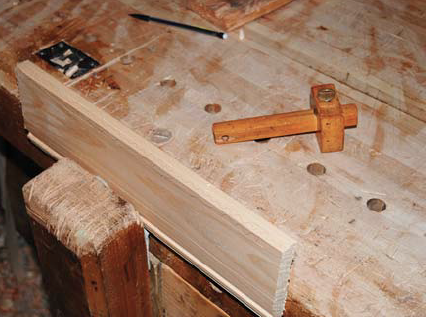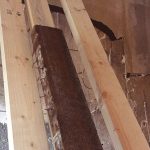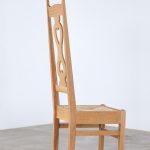We may receive a commission when you use our affiliate links. However, this does not impact our recommendations.
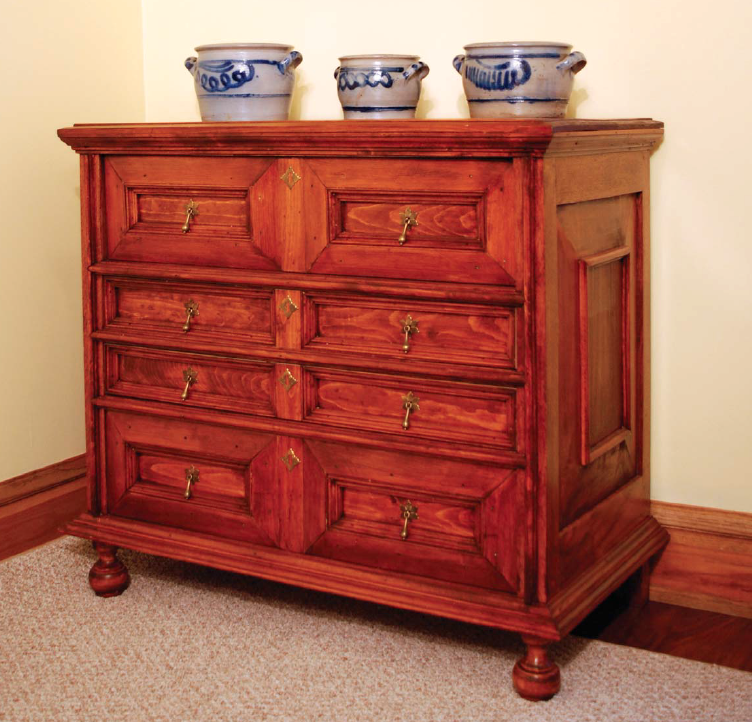 While rabbet joints are used commonly to attach case fronts and backs in period work, they show up in other places too. In pieces from the 17th century and earlier, such as the Mannerist dresser shown above, drawer fronts often are rabbeted and the drawer sides simply nailed into that rabbet. Later, in the early 18th century, drawer sides were rabbeted to hold the drawer bottoms. The bottoms are typically nailed or glued into the rabbets and then covered by a thin piece of wood called a drawer slip, which provides a long-lasting surface for the drawer to run on.
While rabbet joints are used commonly to attach case fronts and backs in period work, they show up in other places too. In pieces from the 17th century and earlier, such as the Mannerist dresser shown above, drawer fronts often are rabbeted and the drawer sides simply nailed into that rabbet. Later, in the early 18th century, drawer sides were rabbeted to hold the drawer bottoms. The bottoms are typically nailed or glued into the rabbets and then covered by a thin piece of wood called a drawer slip, which provides a long-lasting surface for the drawer to run on.
Rabbets can be produced in several different ways, but all methods start by laying them out with the marking gauge and ruler.
How you remove the wood from there is dependent on your tool kit, your skill and your preferences. You can chisel to your lines.
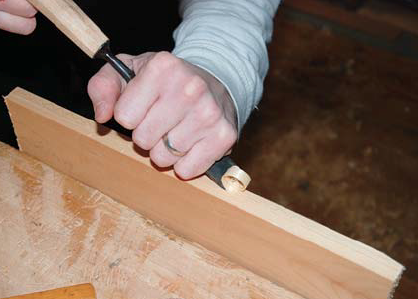
A rabbet can be cut quickly and efficiently with a chisel. Keep both hands behind the cutting edge or you run the risk of having a very bad day.
You can also use the rabbet plane to cut to the lines, using your fingers as a fence.
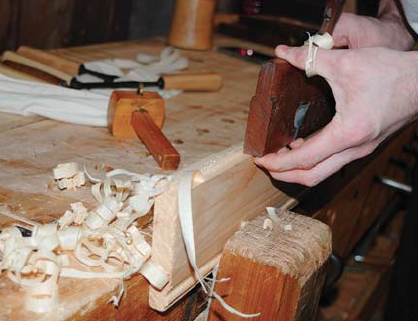
The rabbet can also be cut with the rabbet plane using your fingers as a fence, as shown. This tool also cleans up rabbets cut with a chisel.
Perhaps the most reliable way to achieve a square rabbet is to use the moving fillister plane.
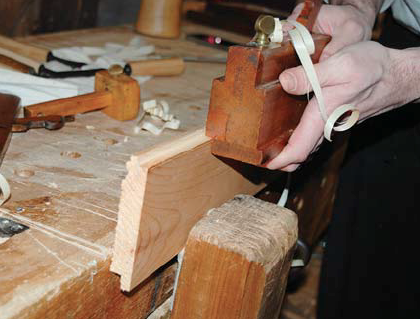
Although designed to cut across the grain, the moving fillister plane makes cutting rabbet joints quick, easy and repeatable, due to its movable fence and depth stop.
When using this and all other fenced tools, it is important that your left hand only push the tool’s fence into the reference edge, and that your right hand only push the tool straight forward and down into the work. If you attempt to “steer” the tool with the right hand or push the tool forward with your left, you almost certainly will fail to cut a square rabbet.
 For more great insight into period-accurate furniture construction, check out “With Saw, Plane & Chisel” by Zachary Dillinger, available now.
For more great insight into period-accurate furniture construction, check out “With Saw, Plane & Chisel” by Zachary Dillinger, available now.
Here are some supplies and tools we find essential in our everyday work around the shop. We may receive a commission from sales referred by our links; however, we have carefully selected these products for their usefulness and quality.



